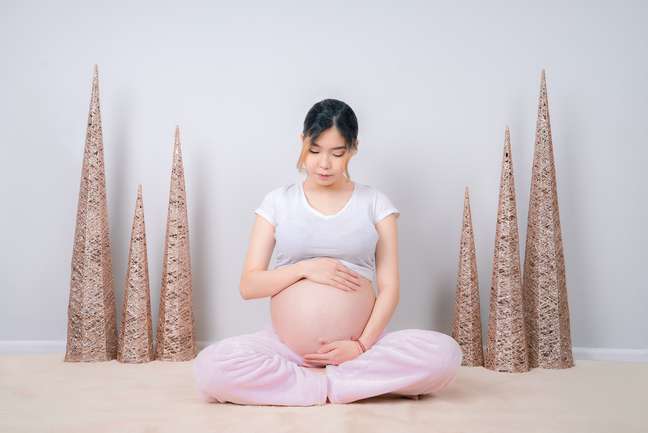The fertility conversation has been gaining ground in recent years, but what does that mean?
You may have noticed that many companies have appeared on the market that exploit female fertility. This is for a reason: with each passing year, women choose to get pregnant later in life.

According to the Brazilian Federation of Gynecology and Obstetrics Associations (Febrasgo), the number of women who gave birth between the ages of 40 and 44 grew by 50% between 1998 and 2017. For women between the ages of 30 and 34, the number grew by 37%.
That is, it is a fact that women are even deciding to get pregnant later in life. Regardless of the reason, this is where fertility studies come in, after all a woman is not fertile for life, even if she is menstruating.
Oops, did this information seem strange to you? So, let’s understand more about it.
MENSTRUATION AND FERTILITY
First of all, it is important to understand the relationship between menstruation and female fertility. “Regular cycles suggest that these women are having ovulatory cycles, therefore with potential pregnancy,” explains the Dr. Nilo Frantz specialist in human reproduction.
“Therefore, menstruation has a strong relationship with fertility, as it is through it that the ovulation process takes place. However, the amount of bleeding is not directly related to fertility, but may indicate uterine pathologies that can affect the chances of pregnancy”. , keep on.
What’s more, the fact that a woman menstruates up to the age of 55, for example, does not mean that she has the same level of fertility as she did at 20. Advancing age, explains the doctor, affects not only the quantity but also the quality of the eggs. Either way, there is a decrease in ovulatory capacity, which interferes with your chances of getting pregnant.
“However, it is important to remember that when a woman enters menopause, it means no ovulation, so the woman’s ovarian reserve is depleted,” explains the doctor. “Does this mean that the woman can no longer be a mother? No, today the technology of assisted reproduction can help in these cases, with the indication of a treatment called egg donation”.
IS IT POSSIBLE TO BE FERTILE LONGER?
Of course not. But through methods like cryopreservation, yes. “Cryopreservation is the act of storing a woman’s eggs at an appropriate age, between 30 and 35, in order to emphasize the woman’s fertility. In this way, when the woman is ready to be a mother, to 37 or 45 years old, she will have kept the eggs and will be able to be a mother using her own eggs “, explains the doctor.
For this, it is essential that every woman knows that she is already born with the total amount of eggs she will release with each menstruation over the course of her life. That is why the more time passes, the fewer eggs she has in her “reserve” and the worse their quality, after all this egg in question has been stored for decades.
It is different from men, who produce sperm for life and, therefore, are more likely to get a woman pregnant regardless of age.
“A woman’s age is a key factor in evaluating fertility,” continues the specialist. “That is, trying to talk about your fertility with your gynecologist, requesting the anti-Müllerian hormone test, which is specific for evaluating ovarian reserve, and also understanding what procedures are available on the market, are fundamental factors to consider, if woman wants to have children, or even for those who are not sure ».
FERTILITY AND THE PROBLEM OF THE DESIGN
It is in this context that the aforementioned companies emerge. With the idea of helping women understand their fertility and plan for the future, they embark on the trend of late pregnancy added to the advancement of technology.
“Female fertility has always been on the agenda,” she explains Rachel Horta , head of digital experience at Bloom Care, a femtech specializing in women’s health. “Now, with more information and with women who understand that fertility is also with them and not with each other or the gynecologist, she is taking a leading role in this problem.”
With more knowledge, women can plan for motherhood, also trying to figure out if they want to be mothers or not. Freezing eggs is also an option for those in doubt, but it is important to take advantage of the window of opportunity: the ideal is to freeze eggs until the age of 34.
“This is why it is important for women to start thinking and talking about the subject at the age of 28 or 29, because we realize that, on average, it takes 2 to 3 years for those who freeze eggs to carry out this will. , if the woman starts thinking at 28 or 29, she will probably freeze her eggs at 32. If she starts thinking at 33, maybe she will freeze at 36, ”Rachel explains.
With this, it is also understood that it is possible to freeze eggs after 34, however, these eggs will have a lower quality – this means that the chances of turning into a live fetus decrease exponentially, especially if freezing occurs from the age of 40. .
“It is necessary to consider that what determines the possibility of pregnancy is not the age of the uterus, but the age of the egg. So, when the eggs are frozen at a certain age, we fix the possibility of pregnancy at that age. in which the egg was frozen, it is as if we had the possibility to do an in vitro fertilization in advance “, he continues.
That is why planning is a key point in this process and, unfortunately, a race against time. There is also another tool that puts accurate and necessary information in the hands of patients: the anti-Müllerian test.
WHAT IS THE ANTI-PULLERIA TEST?
While there is talk of fertility and motherhood, we hear a lot about the “anti-Müllerian test”. It is essential in this process. As much as these new companies help in planning and mapping late maternity, only a doctor will be able to interpret the tests and diagnose a woman’s health at that stage of life.
And for this reason the protagonist is the anti-Müllerian hormone. It is produced by the cells of the ovary and regulates the development and growth of the so-called follicles, that is, the structures that contain the egg. It is from it that we can make an “x-ray” of the patient’s fertility level at that time in life.
This hormone has an average life of 6 months – reaching a maximum of 9 months – and measures the monthly waste of eggs.
“The mapping and interpretation of these results can be drawn within bands, which are established between green, yellow and red. If the anti-Müllerian hormone is in the yellow band, the woman should seek a professional to correctly interpret this information. and making decisions. being in the red range means they have a much lower fertility threshold than someone in the green or possibly yellow range, for example, “continues Rachel.
Ah, but here’s the reminder: the anti-Müllerian test, by itself, doesn’t bring all the answers. Furthermore, and regardless of whether you want to conceive or not, to get a complete picture of your fertile capacity it is necessary to have a complete check-up, preferably with a trusted doctor.
Source: Terra
Benjamin Smith is a fashion journalist and author at Gossipify, known for his coverage of the latest fashion trends and industry insights. He writes about clothing, shoes, accessories, and runway shows, providing in-depth analysis and unique perspectives. He’s respected for his ability to spot emerging designers and trends, and for providing practical fashion advice to readers.







